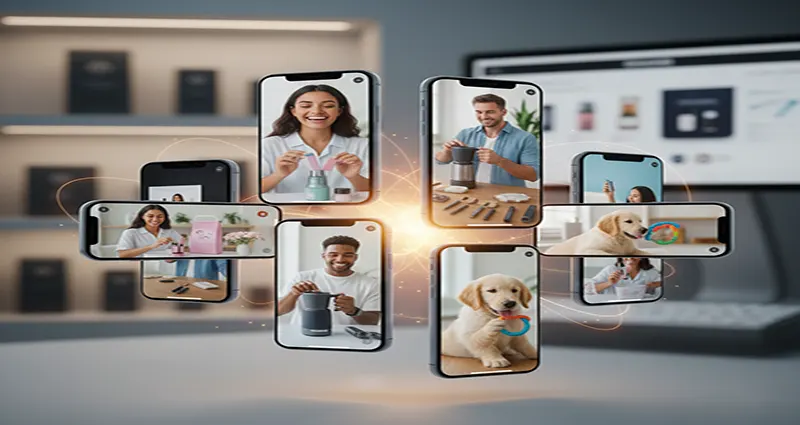The Perpetual Paycheck: Best Recurring Commission Affiliate Programs for Software in 2025
In the world of affiliate marketing, one-time payments are good, but recurring commissions are the ultimate goal. Software as a Service (SaaS) products, by their subscription nature, offer affiliates a chance to earn a commission not just on the initial sale, but every time the customer renews their subscription—often for the customer’s lifetime. This creates a highly valuable, predictable stream of passive income.
For 2025, the market is shifting toward sophisticated, essential business tools. Focusing on these high-retention SaaS categories will be key to building a sustainable “perpetual paycheck.” This 500-word guide breaks down the best categories and strategies for maximizing recurring revenue in the software niche.
📈 Why Focus on Recurring Commissions in 2025?
The shift to recurring revenue is driven by a simple economic principle: Customer Lifetime Value (CLV). When you promote a SaaS product with a high CLV, you are directly investing in your own future … Read the rest >>>
The AI Etsy Empire: How to Sell AI-Generated Digital Planner Templates
The digital planner market on Etsy is booming, but so is the competition. The key to capturing sales is combining niche specialization with the speed of Artificial Intelligence (AI) generation. AI tools can rapidly create the foundational aesthetics, layouts, and even unique digital art elements needed for planners, turning weeks of design work into hours.
However, selling AI-generated products on Etsy requires a strategic approach that respects both platform rules and customer expectations. This guide outlines the steps to launch a successful, high-volume Etsy shop specializing in AI-enhanced digital planners.
🛡️ Step 1: Ensure Etsy Policy Compliance and Uniqueness
Etsy permits the sale of AI-generated content, but it mandates strict disclosure and originality. To protect your shop and credibility, you must:
- Disclose AI Use: Explicitly state in your listing description that AI was used to create the design elements or aesthetics of the planner.
- Select “Designed by”: In the
Pinning for Profit: How to Do Affiliate Marketing on Pinterest Without a Blog
Many beginners believe that successful affiliate marketing requires a complex website or a dedicated blog. While a blog is a great asset, it is not a requirement to generate commissions. Pinterest, the visual search engine, is a powerful and free platform that allows you to connect products directly with buyers, making it the perfect launchpad for blog-less affiliate marketers.
Pinterest functions as a discovery engine, meaning users are often in the “shopping mindset,” actively looking for ideas, products, and solutions. By mastering the art of the perfect Pin, you can direct high-converting traffic straight to your affiliate links. Here is your step-by-step strategy for making money on Pinterest without a website.
🎯 Step 1: Lay the Foundation (Niche & Account Setup)
Your success hinges on smart preparation, not just volume pinning.
- Choose a Niche That Sells Visually: Pinterest excels in niches like Home Decor, Fashion, DIY & Crafts, Recipes, and
The Authenticity Engine: UGC Video Content Strategy for D2C Brands
For Direct-to-Consumer (D2C) brands, the battle is won on the feed. As consumers become increasingly skeptical of highly polished, traditional advertising, User-Generated Content (UGC) video has emerged as the most powerful tool for building trust, community, and, most importantly, driving sales. UGC video is content—such as reviews, unboxings, or tutorials—created by real customers, often using just their smartphones.
It works because it offers social proof and authenticity that no brand can manufacture. Consumers are far more likely to trust the recommendation of a peer than a glossy corporate ad. Developing a robust UGC video strategy is no longer optional; it is the authenticity engine that powers modern D2C growth.
🎥 The Pillars of a D2C Video UGC Strategy
A winning strategy focuses on inspiring and leveraging the right types of content across the entire customer journey.
1. Pinpoint Your Content Need (Types That Convert)
Not all UGC is equal. To … Read the rest >>>
How to Write Amazon Product Descriptions That Convert Sales
Writing a compelling Amazon product description is critical to turning browsers into buyers. A well-crafted description doesn’t just list features; it tells a story, highlights benefits, and addresses potential customer pain points.With Amazon’s vast marketplace, your description is your best salesperson, working 24/7 to boost your conversion rate. This 500-word guide will show you how to structure your copy to maximize sales.
🎯 Understand Your Customer (and Amazon’s Algorithm)
Before writing a single word, you must know who you’re selling to. What are their needs, desires, and biggest questions about your product category?
- Identify Pain Points: What problem does your product solve? Focus your description on how it provides relief or improvement.
- Keyword Strategy: While the title and bullet points are primary for indexing, strategically embed your most important long-tail keywords throughout the description to help Amazon’s search algorithm understand and rank your product better. Do not keyword














